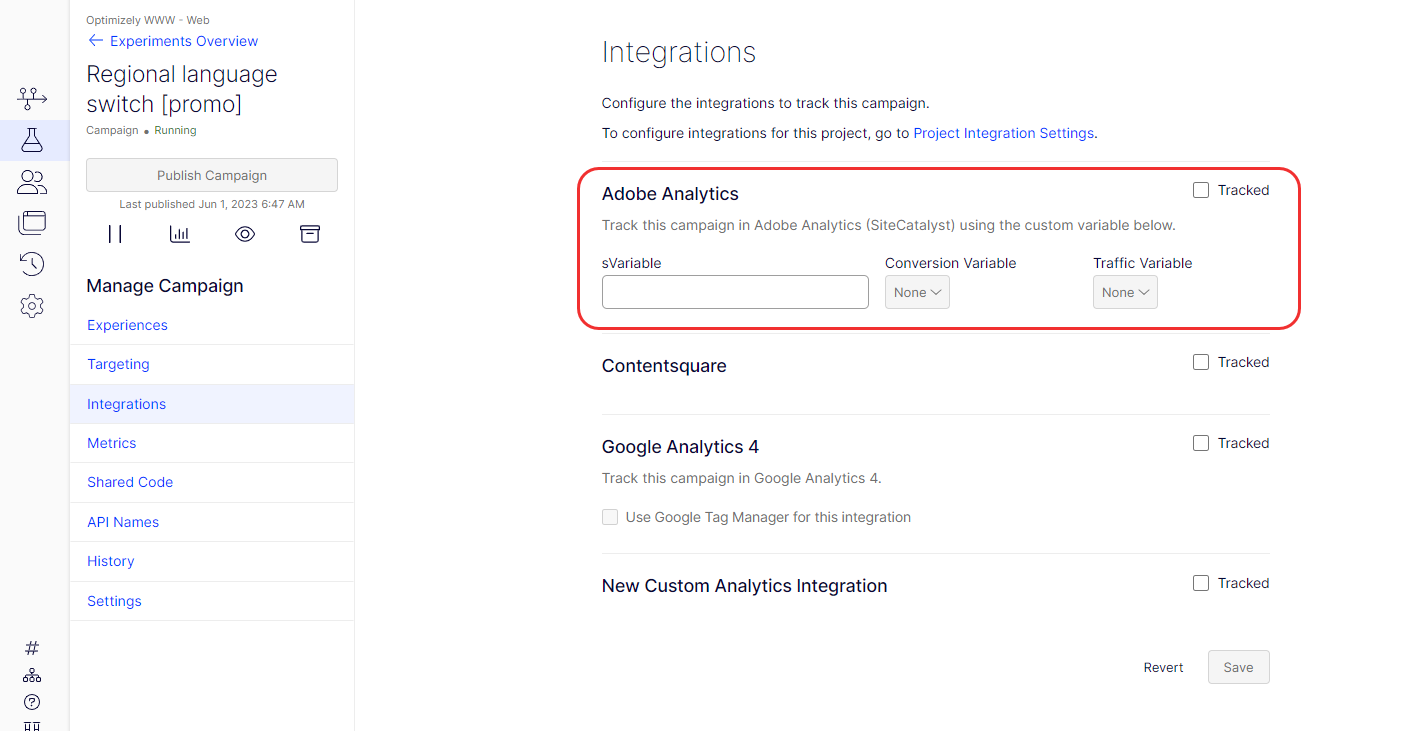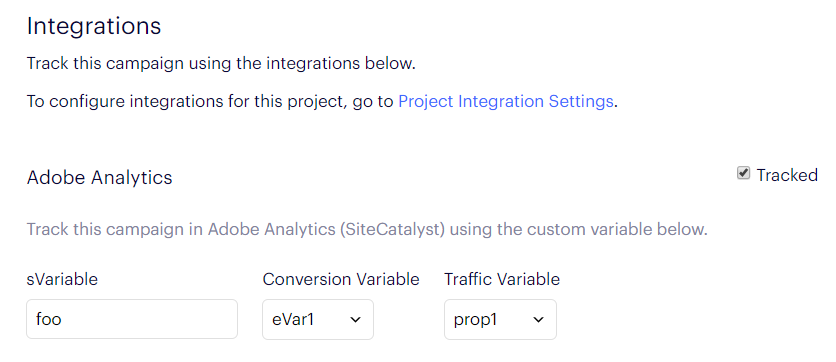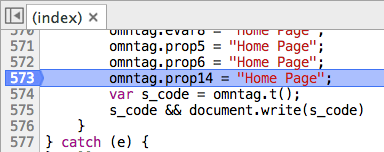Integrate Adobe Analytics
Describes how to integrate Adobe Analytics to read experiment data from Optimizely Web Experimentation and set up custom conversion variables and traffic variables.
NoteThis is a third-party integration and is not an Optimizely subprocessor. See Optimizely's Third-Party Add-Ons & Platform Integration Terms.
Optimizely Web Experimentation's integration with Adobe Analytics lets you view the analytics details for visitors who have seen a specific variation of your Optimizely Web Experimentation experiment or a specific experience of your Optimizely Web Personalization campaign.
Enable in Optimizely Web Experimentation
- Enable the integration for your Optimizely Web Experimentation project.
- Go to an individual experiment or Optimizely Web Personalization campaign you want to track in Adobe Analytics.
- Click Integrations under Manage Campaign.
- Select the custom conversion variables (eVar) you want Optimizely Web Experimentation to use under Conversion Variables. The eVar should not be used by another part of your site or a concurrently running Optimizely Web Experimentation experiment.
- (Optional) Add an sVariable. Some sites use custom Adobe Analytics implementations with special sVariable names. The sVariable contains all tracking tags sent to Adobe Analytics for a given visitor. You can also specify a custom sVariable. If no parameter, Optimizely Web Experimentation uses
sby default.

Check the custom report for your experiment
After enabling the integration, check the custom Adobe Analytics report for your experiment to ensure it works.
You can find the custom variable with these steps:
- Select Custom Conversion > Custom Conversion XX-XX> Optimizely (vXX). The XX represents the eVar you selected when you enabled the Optimizely Web Experimentation integration.
- Click the Optimizely Web Experimentation custom conversion to go to the custom report.
- Click Add Metrics to check how specific custom events perform across variations.
- Drag the custom event you want to display from the Available Metrics list to the Report Data Columns Canvas list to add it to the report.
- Click OK when finished. You should see a modified report showing the custom event's conversion data.
If you are using Optimizely Personalization, filter the report for the words holdback to see only the data from visitors included in your campaign. Optimizely Personalization also tracks events for visitors included in the campaign holdback. See Naming conventions for Third-party integrations.
Set up a custom conversion variable
Custom conversion variables (eVars) let you capture conversion events or other attributes specific to your webpage. When combined with integration in Optimizely Web Experimentation or Optimizely Personalization, eVars let you segment your reports by your experiments and identify the best-performing variation. When an Optimizely decision event fires, Optimizely sends an event to Adobe with the eVar. This lets you create a report based on a specific eVar value.
To reserve an eVar for your Optimizely Web Experimentation experiment:
- Go to Report Suite Manager in Adobe Analytics.
- Select Edit Settings > Conversions > Conversion Variables.
- Click Add New eVar.
After adding your eVar, choose a unique name, allocation type, cookie expiration, data type, and relation status. The default values are recommended:
- Allocation – Most Recent (Last)
- Expire After – Visit
- Type – Text String
- Status – Basic Subrelations
Allocation determines which eVar value is associated with a given visitor. If the visitor triggers multiple events, for example, you might want to use the last value they were assigned for revenue and participation metrics. Choosing Linear allocation divides the revenue and success goals evenly over all events. If you want to view your success events across multiple eVar values, you can do that with participation.
Troubleshoot your integration
Tools to help verify things are working correctly
You can use a Chrome Browser extension that detects when a tracking call was made and what values were sent.
Identify the Adobe Analytics tracking call
By default, Adobe Analytics uses s.t(); to send a tracking call. This function call sends out all Adobe Analytics tracking information for the pageview. By default, Optimizely assumes this is s, but this tracking call may have a different leading variable that is not s if you are using a custom tracker name. If you cannot find s.t(); on your page, search for .t() to see if there is a call with a different leading variable name before the period.
When a decision event is made, Optimizely sends that event to Adobe Analytics when possible, looking for the availability of the Adobe Analytics object. If the Adobe Analytics object is not ready when a decision is made, Optimizely checks every 200 MS for 10 seconds to send the Adobe Analytics string. This helps with delayed activation experiments and geo-targeted experiments.
Identify a Custom Tracker (sVariable)
This step is optional if you use a default Adobe Analytics implementation. If you notice a different variable name other than s before the period for the .t() tracking call, that is the name of your custom sVariable, such as foo.t();. You must modify your integration settings to reflect the custom variable name.

This is an example of a working integration for a custom tracker named omntag:

This is an example of the s object omntag when Optimizely populates eVar1 correctly:

Updated 8 days ago